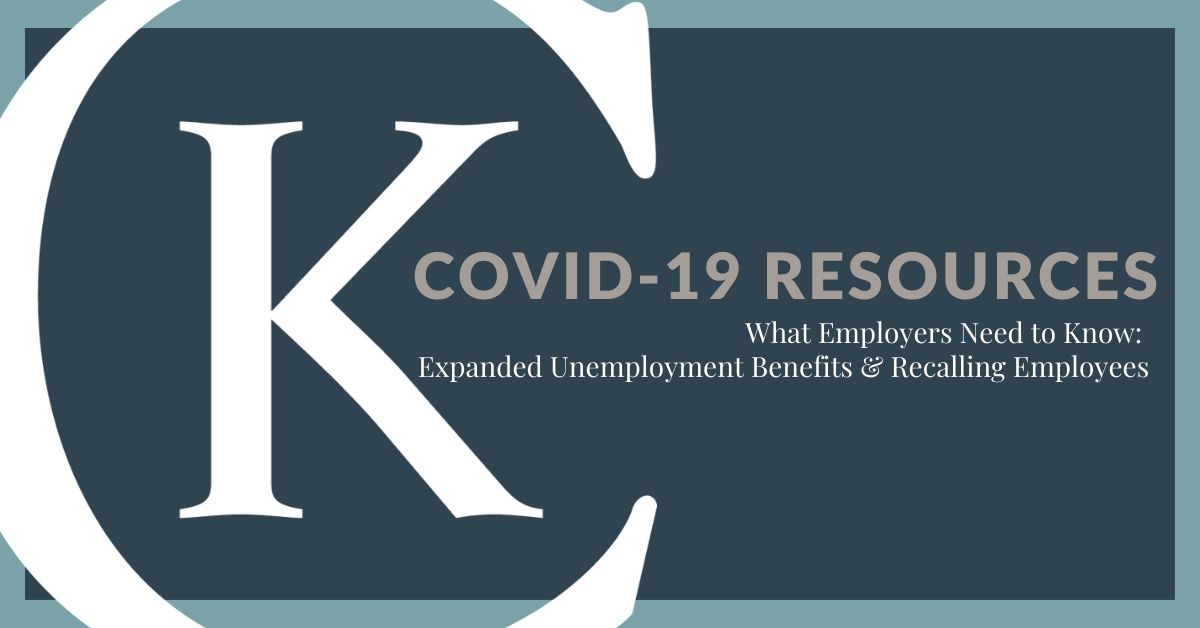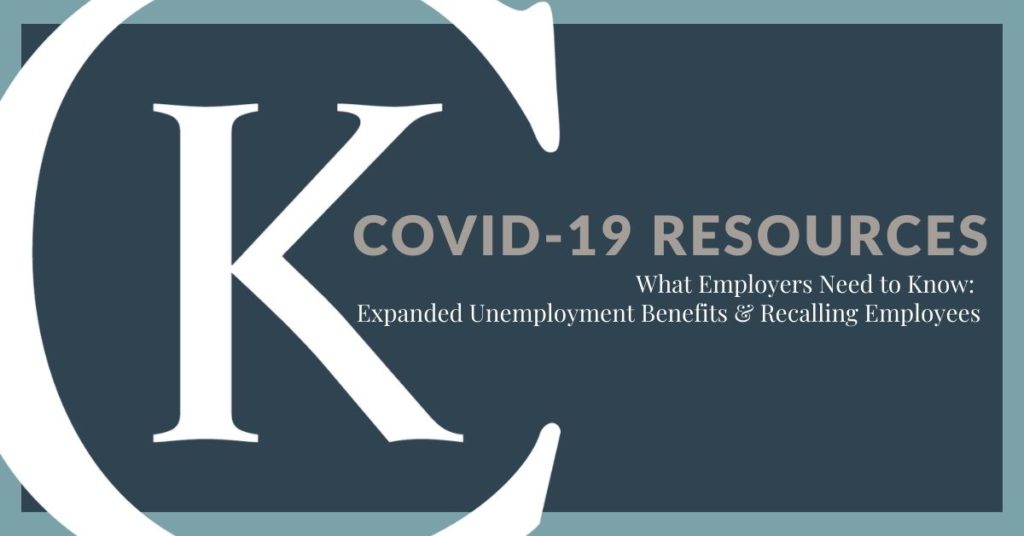
Under the CARES Act, individuals have the benefit of additional administrative  funding and expanded unemployment insurance. While these benefits can provide much needed support to individuals who have been affected by the pandemic, it also poses a variety of questions for employers.
funding and expanded unemployment insurance. While these benefits can provide much needed support to individuals who have been affected by the pandemic, it also poses a variety of questions for employers.
Expanded Benefits
The CARES Act expands the scope of individuals who are eligible for unemployment benefits, including those who are “furloughed” or otherwise unemployed as a direct result of COVID-19, including self-employed individuals, independent contractors, gig workers, and those who have exhausted existing state and federal unemployment benefits. The CARES Act also provides individuals with an extra $600 weekly payment, in addition to the weekly benefit amount an eligible employee otherwise receives under state law.
Layoff vs Furlough
It’s important for employers to note the difference between laying off employees vs furloughing employees. A layoff typically means that an employee is let go permanently, while furloughing an employee typically indicates it is temporary. When an employee is furloughed, they remain employed but are paid less or not paid at all.
Furloughing employees rather than laying them off can be beneficial when it comes to employee retention. Although businesses may not be able to operate under the current circumstances, when orders are lifted employers will need their employees in order to get back to business.
It’s also important for employers to determine eligibility for continued benefits. Will you make payouts on vacation time? Will you continue health insurance benefits? Be sure to consult your existing plan documents to understand what your employees are entitled to in both scenarios.
In Ohio, vacation pay is considered deductible income. If an employer chooses to pay out vacation time and it is less than an employee’s weekly unemployment benefit amount, the weekly payment will be reduced by the amount of income for the week.
Under both circumstances (layoffs and furloughs), employees may be eligible to apply to receive unemployment benefits, however it’s important to note that if employees receive vacation payouts, it may decrease their unemployment checks. This varies by state.
Recalling Employees
A recall list tells employees if and when they will be asked to return to the job. Some companies may not be fully closed, but do not currently need 100% of their workforce. A strategy that some companies are taking is furloughing workers in a two week schedule. So, employees will be furloughed and collect unemployment benefits for two weeks, and then return to work for two weeks, alternating with a secondary group of employees. This allows employees to take advantage of unemployment benefits but also helps to retain your talent.
Unemployment Paperwork
As an employer you will receive, via United States Postal Service, a letter from the Ohio Department of Job and Family Services with 26 questions around your employee’s unemployment claim. You will need to fill this out and return it to the state as soon as possible. The questions start by requesting basic employee information such as start date and last date worked. It goes into many questions around why the employee was let go. Be as specific as possible in regards to timing and if the reason for unemployment is COVID related. If the unemployment is not caused by COVID, go in to as much detail as possible during the questions, including disciplinary action, coaching conversations, etc.
If an employee has claimed unemployment but willfully resigned, please fill the form out, and prepare to appeal should unemployment be granted. If you need help filling your unemployment forms out or if you have questions regarding filing an appealing, please contact Corrigan Krause Human Resource Manager Mia Feldmann, SHRM-CP at mia@corrigankrause.com.
I received PPP funding but my employees don’t want to return to work. Now what?
For some workers, the combination of their state’s unemployment benefits plus the extra $600 per week will work out to more than they were making when employed. This is posing difficult challenges for employers, especially those who have received PPP funds and need to withstand the same number of FTEs in order to ensure forgiveness.
If your former employees aren’t able to return to work or are unwilling, you are able to hire new workers to meet the FTE requirement without jeopardizing the portion of your PPP loan that will be forgivable. If your employees are concerned about returning to work due to risks related to the coronavirus, you can offer them a hazard pay bonus or other bonuses. This additional compensation is considered an allowable expense for PPP loans.
Employees who quit hoping to receive unemployment compensation rather that working will not be eligible for unemployment compensation. Eligibility for regular unemployment compensation varies by state but generally does not include those who voluntarily leave employment. Employers who believe an employee is refusing to return to work in order to continue to receive unemployment benefits can dispute the employee’s eligibility by completing the Unemployment Fraud and Ineligibility Form on the ODJFS website.
In conclusion, consult your plan documents, weigh layoff vs furlough and develop a plan to bring employees back. Lastly, it’s important to have patience. Over the past month, millions of individuals have applied for unemployment making response time to claims longer than usual.
Answers to other frequently asked questions regarding unemployment can be found here.
